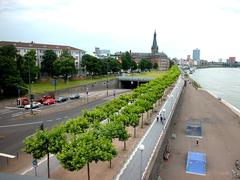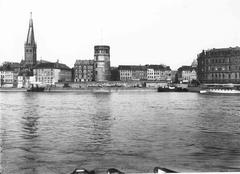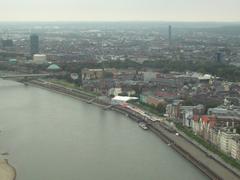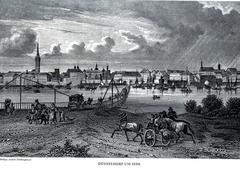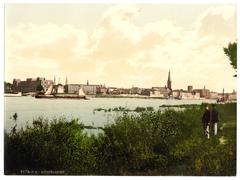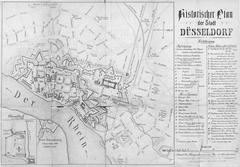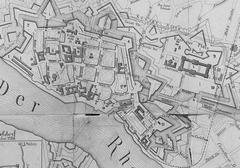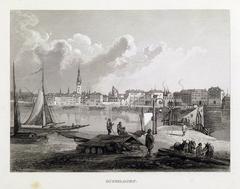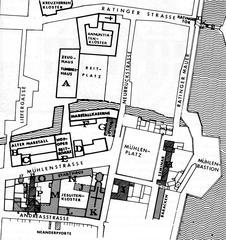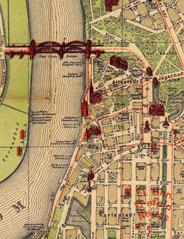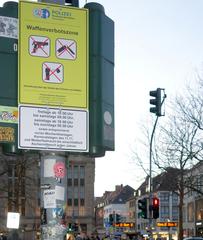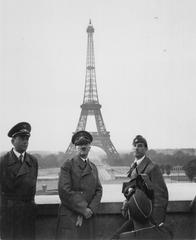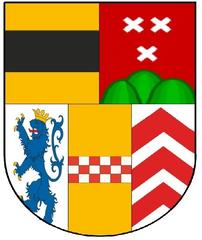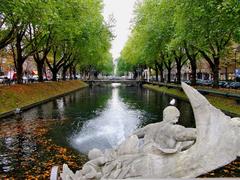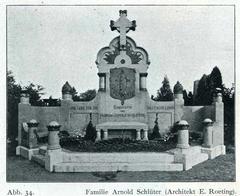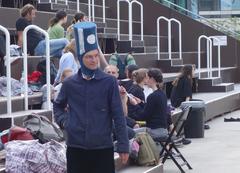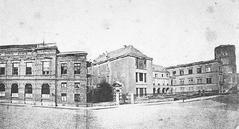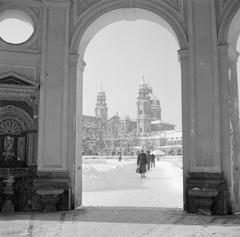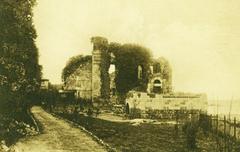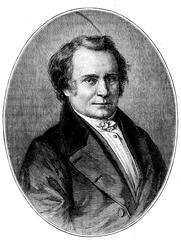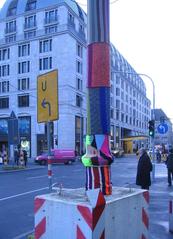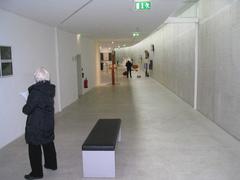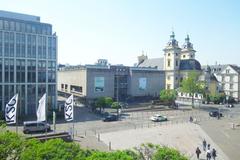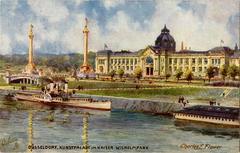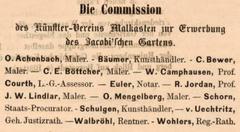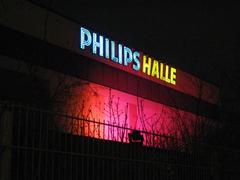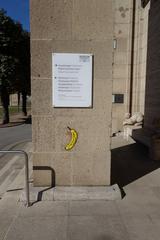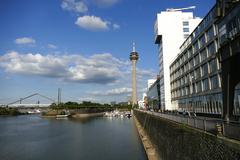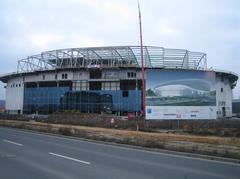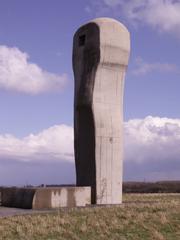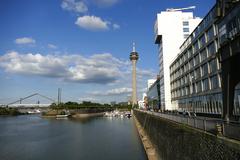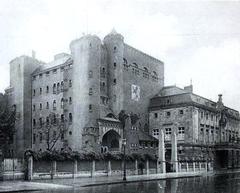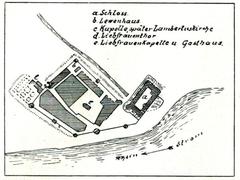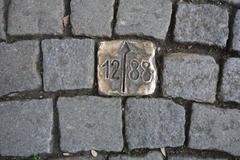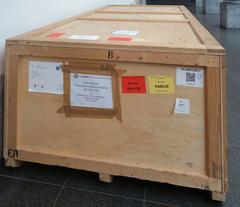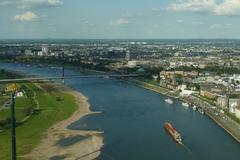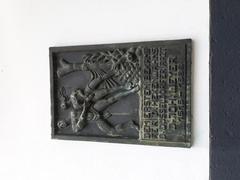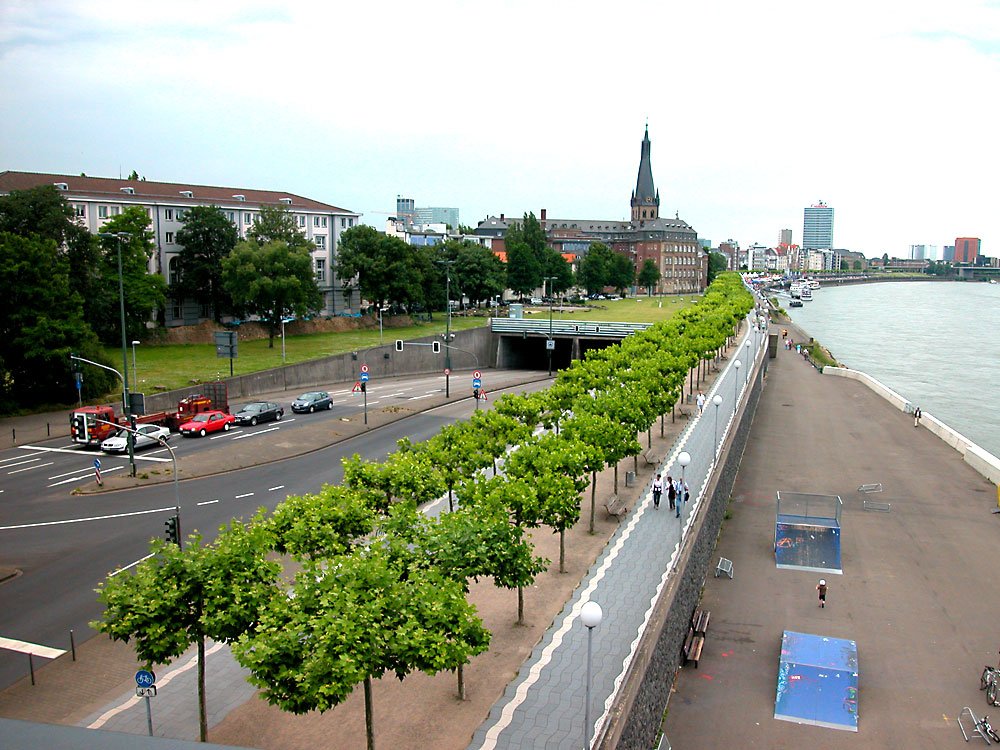
Comprehensive Guide to Visiting Oberkasseler Brücke, Düsseldorf, Germany
Date: 20/07/2024
Introduction
The Oberkasseler Brücke, located in Düsseldorf, Germany, is a remarkable testament to the city’s historical resilience and architectural innovation. As one of the most significant bridges spanning the Rhine River, it not only serves as a crucial transportation link but also as a cultural and historical landmark. Constructed initially between 1896 and 1898, the bridge has witnessed and adapted to numerous historical events, including the devastations of both World Wars and subsequent reconstructions. Today, the Oberkasseler Brücke stands as an iconic feature of Düsseldorf’s skyline, symbolizing the city’s enduring spirit and modernity. This guide aims to provide potential visitors with a comprehensive understanding of the bridge’s history, architectural significance, and practical visitor information to ensure a memorable experience. For more detailed insights, sources such as the Düsseldorf City Archives, Rheinische Post, and Düsseldorf Tourism offer extensive historical context and visitor resources.
Table of Contents
- Introduction
- Early Conception and Construction
- World War I and Interwar Period
- World War II and Reconstruction
- Modern Developments
- Cultural and Architectural Significance
- Preservation and Maintenance
- Visitor Information
- Historical Milestones
- FAQ
- Conclusion
- References and Further Reading
Exploring the History and Significance of Oberkasseler Brücke in Düsseldorf
Early Conception and Construction
The Oberkasseler Brücke, a significant bridge in Düsseldorf, Germany, has a rich history dating back to the late 19th century. The initial plans for the bridge were conceived in response to the growing need for a reliable connection between the districts of Oberkassel and the city center of Düsseldorf. The construction of the bridge began in 1896 and was completed in 1898. This early version of the bridge was a steel truss bridge, a common design of the era, which facilitated the movement of both pedestrians and horse-drawn carriages.
World War I and Interwar Period
The Oberkasseler Brücke played a crucial role during World War I, serving as a vital link for military and civilian transportation. However, the bridge suffered significant damage during the war, necessitating extensive repairs in the post-war period. The interwar years saw the bridge being reinforced and modernized to accommodate the increasing traffic demands of the burgeoning city.
World War II and Reconstruction
The bridge’s strategic importance was highlighted once again during World War II. In 1945, as Allied forces advanced into Germany, the retreating German army destroyed the Oberkasseler Brücke to hinder their progress. This destruction was a significant blow to the city’s infrastructure, severing a critical connection across the Rhine River.
In the immediate post-war years, the reconstruction of the Oberkasseler Brücke became a priority. The bridge was rebuilt between 1948 and 1951, this time as a suspension bridge, which was a more modern and robust design. The new bridge featured two main towers and a central span of 250 meters, making it one of the longest suspension bridges in Germany at the time.
Modern Developments
In the decades following its reconstruction, the Oberkasseler Brücke underwent several modifications to meet the evolving needs of the city. In the 1970s, the bridge was widened to accommodate increased vehicular traffic, reflecting the rapid urbanization and economic growth of Düsseldorf. The bridge’s design was also updated to include dedicated lanes for bicycles and pedestrians, promoting sustainable transportation options.
Cultural and Architectural Significance
The Oberkasseler Brücke is not only a vital transportation link but also a cultural and architectural landmark. Its distinctive design, with elegant suspension cables and towering pylons, has made it an iconic feature of the Düsseldorf skyline. The bridge is often featured in local art and photography, symbolizing the city’s resilience and modernity.
Preservation and Maintenance
Maintaining the structural integrity of the Oberkasseler Brücke has been a continuous effort. Regular inspections and maintenance work are carried out to ensure the bridge remains safe and functional. In recent years, there have been discussions about further renovations to enhance the bridge’s capacity and durability, reflecting the ongoing commitment to preserving this historic structure.
Visitor Information
- Visiting Hours: The Oberkasseler Brücke is accessible 24/7. However, the best time to visit for photography is during sunrise or sunset when the lighting is optimal.
- Tickets: There are no tickets required to visit the Oberkasseler Brücke. It is a public structure open to all.
- Travel Tips: For a comprehensive experience, consider walking or biking across the bridge to enjoy the scenic views of the Rhine River and the Düsseldorf skyline.
- Nearby Attractions: The bridge is close to several attractions including the Rhine Promenade, the Altstadt (Old Town), and the Kunstpalast Museum.
- Special Events: The bridge often serves as a venue for local events and festivals, particularly during the summer months.
- Guided Tours: Various guided tours are available that include the Oberkasseler Brücke as a highlight of Düsseldorf’s historical sites.
- Photographic Spots: The best spots for photography include the pedestrian pathways on the bridge and the riverbanks on either side.
Historical Milestones
- 1896-1898: Initial construction of the steel truss bridge.
- 1945: Destruction of the bridge during World War II.
- 1948-1951: Reconstruction as a suspension bridge.
- 1970s: Widening and modernization to accommodate increased traffic.
FAQ
Q: What are the Oberkasseler Brücke’s visiting hours? A: The bridge is accessible at all times. However, early morning or late afternoon provides the best lighting for photography.
Q: Is there an entrance fee to visit the Oberkasseler Brücke? A: No, visiting the bridge is free of charge.
Q: Are there guided tours available? A: Yes, various guided tours include the Oberkasseler Brücke as part of the itinerary.
Q: What are some nearby attractions? A: Nearby attractions include the Rhine Promenade, Altstadt, and the Kunstpalast Museum.
Q: Can I bike across the Oberkasseler Brücke? A: Yes, the bridge has dedicated lanes for bicycles and pedestrians.
Conclusion
The Oberkasseler Brücke stands as a testament to Düsseldorf’s historical and architectural evolution. Whether you’re a history enthusiast, architecture aficionado, or simply looking for a picturesque spot, the bridge offers something for everyone. For more information on Düsseldorf’s historical sites and to stay updated, download the Audiala app and follow us on social media.
